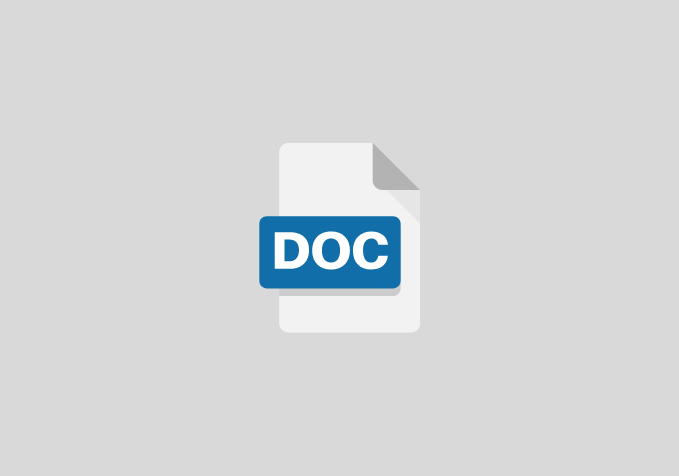Design and Implementation of Student Verification System for Delta State University Nigeria (Delsu E-verify)
CHAPTER ONE
OBJECTIVES OF THE STUDY
- The importance of authentic document and certificate can not be overemphasized as the reputations of institution are affected in every counterfeit or forged document or
- To design and implement student verification system for Delta State University. The system will
- Prove the authenticity of document and certificate belonging to Delta State University thereby expunging forged and counterfeit certificate and document from circulation
CHAPTER TWO LITERATURE REVIEW
INTRODUCTION
This chapter focuses on the pass work of other people/researcher. It shows what they have done as regard to the study STUDENT VERIFICATION SYSTEM. Verification systems does a primary functions with confirmation systems. This chapter shows research work and their impact to the study.
REVIEW OF VERIFICATION SYSTEMS
An address verification system (AVS) verifies the address of a person claiming to own a credit card. The system will check the billing address of the credit card provider by the user with the address on file at the credit card company. This system also uses another security features for the credit card which include the card verification value (CVV2) number.
AVS is used when the merchant verifies credit card data, such as billing address and zip code, against the VISA/master card billing information of the card holder. This system makes some that the billing address of the credit or debit card matches the address that was given by the customer. Because AVS only verifies the numeric portion of the address, certain abnormalities like apartment can cause false declines; however, it is reported to be a rare occurrence. For example if someone address is 101 main street, highland, CA 92346, AVS will check only for 101 and 92346. Sometimes, AVS checks additional digits such as apartment number, other times it does not. Card holder may receive false negative or partial decline for AVS from e-commerce verification system, which may require manual overrides, voice authorization or reprogramming of the AVS entries by the card issuing bank.
AVS is master card service to combat fraudulent activity for non-to- face transaction by cross-referencing the card holders address information with the card issue’s records. AVS is widely supported by VISA and master card in the USA, Canada and United Kingdom. American express only supports AVS in the USA. Cardholders with a bank that does not support AVS may receive an error from internet stores due to lack of data.
CHAPTER THREE
SYSTEM ANALYSIS AND DESIGN
INTRODUCTION
In this chapter the analysis of the proposal system and its design is discussed more. That is to say, what the proposal system- DELSU e-Verify, is made of, its features and how it is designed- its outputs, inputs and database. Likewise the tools and technology that are used are not left out.
Advertisements
SYSTEM ANALYSIS OF THE SYSTEM
A system is an harmonious arrangement of components hardware and software; that interact to achieve a common goal. ( Stella C.C and France A.E., 2006).
Analysis is the focus of system development and is the stage when system designers’ works at two levels – what to do and how to do. Analysis of students verification system (DELSU e-Verify) involves a detailed study of various operation performed by it.
CHAPTER FOUR
DESIGN AND IMPLEMENTATION
INTRODUCTION
This chapter focuses, on the requirements for this automated system’s implementation. Information about the installation is also discussed, moreover, the automated system is described in UML (Unified Modeling Language) and the use case diagram is given.
An automated system that is not implemental or is not successful implemented can not be used to perform well as the case may be. “Even after the development phase is over, the system project isn’t complete. The new system must be implemented or installed” (said Stella C.C. and Franca A.E, (2006)).
CHAPTER FIVE
SUMMARY AND CONCLUSION
SUMMARY
Students’ verification is a major and important activity to any institution. The system that has been in existence is the manual system which has many defects as mentioned earlier in section 3.3 of this material. The merits of this automated system over the existing one are as follows
- Accuracy
- Reliability
- Reduced paperwork
- Speed in processing time
- It cannot be manipulated
- Simple process
- Users friendliness with GUI
RECOMMENDATION
This work should not put a stop to research on student verification technology as biometrics technology, facial recognition and Iris recognition technologies can be integrated to the technology used in this system.
Despite the fact that the system is a window based system (application software), it should be re developed to a web based system but with stronger security measures to avert web hackers and theft.
Also, we strongly recommend this software for Delta State University and other degree awarding institution.
CONCLUSION
- Automated system has proved to be more successful when compared to manual systems.
- Student verification system redefines the manual verification system, hence averts academic fraud and illegal studentship certificate and document.
REFERENCE
- Byron, S.G. (2001). Theory and Problems of Programming with visual basic Schaum’s Outline. McGraw – Hill USA.
- Sikiru, O.A. (2009). Implementation of an Online Job recruitment system. An unpublished M.IT Thesis, University of Lagos, Nigeria.
- Stella, C.C. and Franca, A.E (2006). Principles of System Analysis and Design.
- Rootprint and publisher, Benin city – Nigeria.
- Suhansa, R., George, Y. and Ronald, W. (2011). Students verification system for Online Assessments: Botstering Quality and interigty of Distrance Learning. Journal of Industrial Technology. Volume 27 Number 3. P1-8.
- Uzoka. (1998). Human Resources Management an unpublished M. Tech Thesis, federal University of Technology, Akure, Ondo State.


